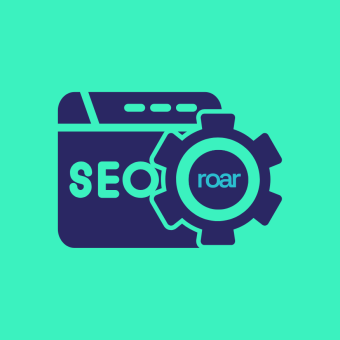Email marketing in 2025 is compliance-first, AI-driven, and privacy-shaped. UK marketers must master authentication, data strategy, and accessible design to protect deliverability, build trust, and drive ROI in a stricter, smarter inbox environment.
Email marketing has moved from being a simple communication tool to a highly regulated, AI-powered channel that requires careful planning and constant management. But, for many marketing departments across the UK it remains one of the most reliable ways to drive revenue. But the rules have changed.
Deliverability depends on strict compliance with new authentication standards. Measurement is shaped by privacy laws and platform restrictions. AI powers everything from subject lines to predictive segmentation. Customers expect brands to respect their data, speak with empathy, and deliver accessible experiences.
The state of email marketing in 2025
Email’s continued dominance in the UK
Email continues to be a core channel in the UK. According to the DMA, volumes climbed back to over 380 billion messages in 2023 after the pandemic dip. This growth has continued through 2024 and into 2025.
Publishers such as The Guardian, The Times, and The Economist have doubled down on newsletters as direct revenue products. Subscriptions, membership drives, and audience engagement are all fuelled by email.
Despite the noise around social media and paid search, email still delivers the highest return on investment. For every £1 spent, businesses can see an average of £35 back in value.
Why 2025 is a turning point
The industry is facing structural change. Gmail, Yahoo, and Microsoft have tightened their rules. Privacy changes from Apple and Google have disrupted tracking. AI has shifted from being a curiosity to being embedded in core marketing systems.
Customer expectations have also grown. UK brands are offering empathetic opt-outs for sensitive occasions. Accessibility and dark mode design are no longer optional.
In short, email remains powerful, but it is also more complex. Success requires compliance, creativity, and a strong data strategy.
Deliverability rules have changed the game
Gmail and Yahoo requirements
Since 2024, Gmail and Yahoo have required bulk senders to authenticate with SPF, DKIM, and DMARC. Spam complaint thresholds are stricter. Brands must now offer a one-click unsubscribe link that is honoured quickly.
These rules apply to anyone sending at scale. If you fail to comply, your messages risk rejection or being filtered to spam.
Outlook and Microsoft
In May 2025, Microsoft introduced new requirements for Outlook. Senders delivering more than 5,000 messages a day now need to meet the same standards as Gmail and Yahoo. This closes the gap between consumer and enterprise email ecosystems.
The impact is significant for B2B marketers. Even professional communications must meet modern authentication rules. Marketing managers need to coordinate with IT to ensure domains, IPs, and DNS records are properly configured.
BIMI and brand trust
Brand Indicators for Message Identification (BIMI) has gained traction in the UK. With BIMI, a verified logo appears next to a brand’s message in the inbox. To qualify, businesses must enforce DMARC and obtain a Verified Mark Certificate.
The benefit is trust. In crowded inboxes, a brand logo provides instant recognition. Early adopters in retail and finance are already seeing uplift in engagement. But it’s quickly becoming a given, and now instead of brands with a logo standing out for the right reason – brands without a logo stand out for the wrong ones.
Deliverability hygiene
Deliverability is about more than just authentication. Poor practices can still trigger spam filters. These include using “no-reply” sender addresses, buying email lists, or relying on link shorteners.
Marketers are also adopting sunset policies to remove inactive subscribers. This reduces complaint rates and signals list quality to providers. Investment in compliance and hygiene protects brand reputation and ensures that messages land where they should.
Privacy and regulation in 2025
Apple Mail privacy protection
Apple’s Mail Privacy Protection, first introduced in 2021, has now been fully adopted by most iOS users. It hides open rate data by preloading tracking pixels. Meaning your open rates are unreliable.
The focus has shifted to clicks, conversions, and revenue per recipient. These metrics give a more accurate view of engagement.
iOS17 Link Tracking Protection
Apple has also introduced Link Tracking Protection. This removes tracking parameters from URLs in Mail, Messages, and Safari. It affects UTMs that many marketers rely on for attribution.
To adapt, businesses are investing in server-side tagging and consented first-party data. Zero-party data, collected through surveys and preference centres, is becoming a valuable tool for personalisation.
UK regulatory landscape
In the UK, the Privacy and Electronic Communications Regulations (PECR) continue to govern email marketing. Consent remains the gold standard. The soft opt-in still applies to existing customer relationships, but it does not extend to bought-in lists.
The Information Commissioner’s Office (ICO) has reinforced that bought-in lists carry risks. Businesses that rely on them face potential fines.
The Digital Identity and Attributes Regulations (DUAA) 2025 support modern identity verification but do not change the fundamental requirements for consent.
Ethical marketing as a differentiator
Ethical practice is becoming a competitive advantage. Brands like Bloom & Wild, Boots, and Etsy now allow customers to opt out of sensitive occasion emails, such as Mother’s Day promotions.
This approach shows respect and empathy. It builds trust and reduces complaints. This is now seen as good marketing hygiene rather than an optional extra.
AI’s evolution in email marketing
From copy helper to orchestration engine
AI in 2025 doesn’t just write subject lines now. It now powers segmentation, personalisation, and send-time optimisation. AI systems can analyse past behaviour, predict future actions, and deliver the right content at the right time. However, most marketers still keep humans in the loop. AI output is reviewed and edited for accuracy, tone, and compliance.
AI adoption in major platforms
Mailchimp now offers AI tools for content generation and product recommendations. HubSpot has integrated AI assistants into its CRM workflows. Salesforce has expanded its Einstein AI with new automation features following its Informatica acquisition. Dotdigital, a UK platform, has pushed predictive analytics and machine learning-driven personalisation.
But it’s still unclear to see if it’s marketers calling for these AI assistants or if they’re being designed by the platforms and marketers are just expected to go along with it.
AI-powered segmentation and send-time optimisation
AI can now calculate the best time to send an email for each recipient. It can also group audiences based on predicted behaviour, such as likelihood to purchase or churn. This has allowed marketers to build more efficient lifecycle programmes. Campaigns are tailored to customer journeys rather than broad segments.
Future outlook
Looking ahead, AI will likely become more and more autonomous. The challenge for marketing leaders is to balance automation with brand authenticity. AI can save time and scale personalisation, but it must be guided by clear rules and brand values.
What no longer works in 2025
Opens as a KPI
Open rates are no longer reliable due to Apple MPP and other privacy controls. Businesses that still use them as primary metrics are misreading performance.
Clicks, conversions, and revenue-based metrics provide a clearer picture. Cohort analysis, measuring groups of users over time, is also gaining traction.
The death of batch and blast
Sending the same message to everyone is increasingly penalised. Complaint rates rise, engagement falls, and providers block bulk traffic. Segmentation and personalisation are now required to maintain deliverability.
No-reply addresses
Emails sent from “no-reply” accounts perform poorly. They discourage engagement and are more likely to be flagged as spam. Brands that use monitored, friendly addresses see better results.
Bought-in lists
Bought-in lists remain risky under PECR. Even when sold as compliant, they often fail to meet consent standards. They also deliver poor engagement.
Marketers are instead investing in owned lists built through lead generation, preference centres, and value-driven opt-in offers.
Outdated creative practices
Image-only emails are often filtered or ignored. Accessibility issues prevent users from reading content. Dark mode readiness is now standard. Brands that fail to test designs in dark mode risk poor readability and lost impact.
Design and accessibility standards in 2025
Dark mode design essentials
As we just mentioned, dark mode is widely adopted across email clients. Designers must ensure brand colours and logos render correctly against dark backgrounds. CSS techniques, including prefers-colour-scheme, are now common practice.
Testing across clients is essential. Without it, emails can appear broken or unreadable, and you don’t have the grace with email users now as we did in previous years.
Accessibility and inclusivity
Accessibility is not just a legal requirement under WCAG 2.1/2.2. It is also a business opportunity. Emails with semantic structure, alt text, and high colour contrast are more usable. Inclusive design expands reach and builds goodwill.
Preference centres as strategic assets
Modern preference centres allow customers to choose topics and set frequency limits. This reduces unsubscribes and keeps engagement steady. For businesses, they are also valuable for collecting zero-party data. This feeds personalisation and helps shape future campaigns.
Benchmarks and market insights
DMA email benchmarking
The DMA benchmarking report shows that volumes in the UK have continued to grow post-pandemic. It also highlights the shift from open rates to engagement quality as a KPI.
Marketers are focusing on revenue per recipient and lifetime value. These metrics are better aligned with business objectives.
Sectoral differences
Retail and ecommerce are leading in adoption of AI personalisation. B2B and professional services are slower to move but are starting to integrate AI for segmentation. Charities are using automation for supporter journeys. They focus on donor retention and stewardship campaigns.
Newsletters as subscription products
Publishers such as The Guardian, The Times, and The Economist have demonstrated how newsletters can be standalone products. Their success shows that email is not just a support channel, but a driver of direct revenue.
Brands can learn from this by treating newsletters as valuable content in their own right.
Example: We’re lovin’ this campaign
McDonald’s UK: Always-on lifecycle programme
McDonald’s won Gold at the 2024 DMA Awards with its Always-On Lifecycle Programme, a customer journey built around four key stages: Welcome, Early Life, In Life, and Rescue. The campaign used predictive modelling and behaviour-driven personalisation to deliver tailored incentives, interactive content, and timely nudges that kept customers engaged at every point in their journey.
Highlights included a “race-the-clock” game embedded in emails, personalised offers based on customer value, and rescue campaigns that reignited lapsed users by letting them select their own app-based rewards. The results were striking: 10.7 million customers engaged, £11.3m in incremental revenue, 1.6m lapsed customers won back, and an ROI of 32:1.
The 2025 email marketing playbook
Compliance first
Authentication with SPF, DKIM, and DMARC is now essential. One-click unsubscribe is a trust signal and a deliverability requirement.
Data strategy
Zero-party and first-party data are central to modern email marketing. Preference centres and surveys enrich profiles and support personalisation.
AI with oversight
AI should be used to scale and optimise. Human review ensures accuracy, brand alignment, and compliance.
Lifecycle marketing
Always-on journeys, including welcomes, post-purchase, and reactivation flows, are the engines of growth. They keep audiences engaged over time.
Accessible design
Emails should be built with accessibility and dark mode in mind. This ensures usability across all audiences.
Deliverability hygiene
Sunset flows remove inactive users. IP and domain warming protects sending reputation. Avoiding link shorteners and “no-reply” addresses ensures trust.
What this means for UK marketing leaders
Strategic priorities
Senior marketing leaders must balance compliance, creativity, and cost. Email is no longer just a tactical tool. It requires board-level attention.
Re-evaluating the martech stack is also a priority. Platforms with embedded AI and compliance features give competitive advantage.
The opportunity ahead
Email remains the control channel in a fragmented marketing landscape. It integrates with paid, organic, and CRM activity.
When managed well, it delivers consistent ROI and builds long-term customer trust.
How Roar helps you win at email in 2025
At roar, we help businesses adapt to the new era of email marketing. Our services include:
- Deliverability audits with SPF, DKIM, and DMARC configuration.
- Lifecycle journey design to engage customers at every stage.
- AI-enhanced personalisation for higher ROI.
- Compliance consultancy on PECR and GDPR.
- Accessible, responsive design that works across dark mode and all clients.
Contact us today to future-proof your email marketing strategy.
Conclusion
Email has changed in 2025. Compliance is now mandatory. AI has become an essential tool. Privacy and accessibility shape the customer experience.
For UK marketing leaders, the challenge is to adapt quickly. Those who invest in data, design, and trust will continue to see email deliver unmatched results.
Roar Digital is here to help you succeed.



